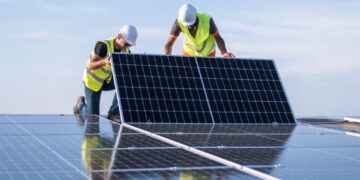In spite of the new tariffs on imported solar panels, the U.S. solar power market recorded an annual growth of 13 percent as it added 2.5 gigawatts of solar PV in the first quarter of the year, a U.S. Solar Market Insight Report from GTM Research and the Solar Energy Industries Association (SEIA) said Tuesday.
Solar PV accounted for 55 percent of all U.S. electricity capacity added during the quarter and added more than two gigawatts for the 10th straight quarter, the study said.
According to the report, giant fields of solar panels led the growth as community solar projects owned by homeowners and businesses took off.
Overall, the report estimates that solar growth in 2018 will mirror 2017’s 10.6 GW before growing more robustly in 2019 and then accelerating in the early 2020s.
According to the report, the solar industry installed 1.4 gigawatts of utility-scale PV in Q1, the 10th consecutive gigawatt-scale quarter for the U.S.’s largest solar market segment.
GTM Research said utility-scale solar projects thus far have been relatively insulated from tariffs but analysts expect the tariffs to have a bigger impact on the segment in 2019. However, they forecast growth for the market.
The report increased the forecast for utility-scale solar to 6.6 GW in 2018. That’s slightly higher than the 6.47 GW predicted in March.
The non-residential solar segment posted its fourth-highest installation total ever, with 509 megawatts installed, representing year-over-year growth of 23 percent. Community solar continues to be a strong driver of non-residential solar demand.
Minnesota alone added more than 100 MW of community solar in Q1. The report says the U.S. has now surpassed 1 cumulative gigawatt of community solar capacity.
New additions of residential PV remained flat quarter-over-quarter and year-over-year in Q1 2018, following a 15 percent contraction in 2017.
Abigail Ross Hopper, president, and CEO, SEIA, said, “The solar industry had a strong showing in the first quarter. This shows that solar has become a common-sense option for much of the U.S. and is too strong to be set back for long, even in light of the tariffs.
“States from California to Florida have stepped up with smart policies that will drive investment for years to come.”























